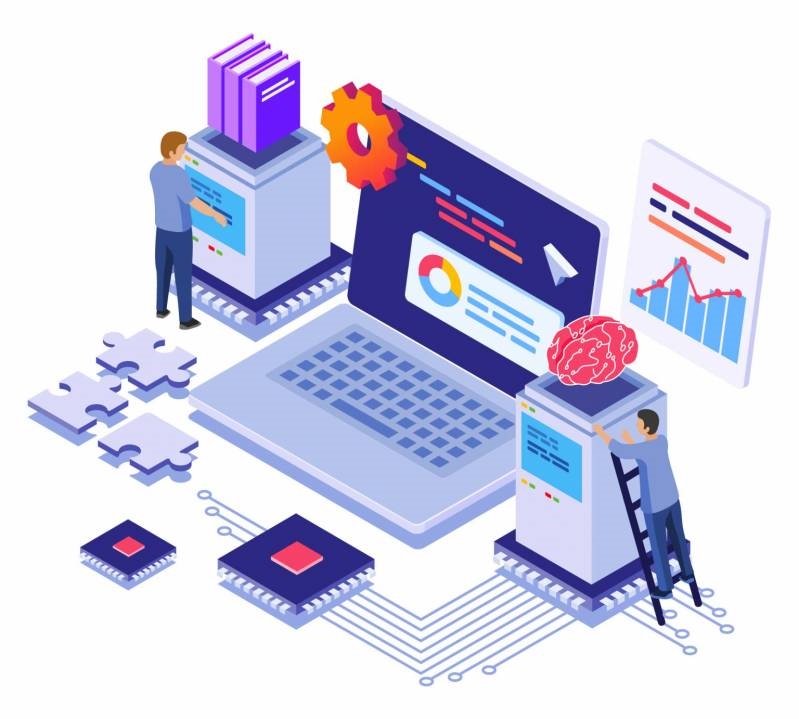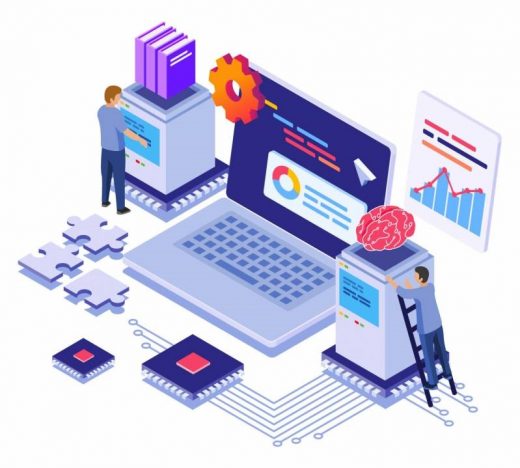The Role of Artificial Intelligence (AI) in Transforming Video Industry
The Role of Artificial Intelligence (AI) in Transforming Video Industry

Artificial Intelligence (AI) has transformed from a merely academic concept to an important technology for businesses across all industries. For example, artificial intelligence has become a powerful tool for content analysis, automatic editing, and personalized recommendations in the video industry.
AI-powered content analysis can help identify the topics covered in a video and the emotions expressed by the people in the video. This information can improve the video content and be more relevant to viewers.
In addition, AI can edit videos by identifying the most critical parts of a video and automatically creating a summary. This can help businesses save time and money by reducing manual editing.
But, What is Artificial Intelligence (AI)?
Artificial Intelligence or AI is used to describe technology that closely mimics cognitive processes such as learning, reasoning, understanding, and problem-solving. AI can process vast amounts of data extremely quickly, enabling people to discover new insights in areas where humans have limited ability, such as image recognition.
AI has already transformed multiple industries across the globe, and the video industry is no exception. In this article, we will explore the role of Artificial Intelligence is transforming the video industry.
How Artificial Intelligence is Changing the Video Industry
There are three primary ways in which Artificial Intelligence changes the video industry: content analysis, automatic editing, and personalized recommendations.
Content Analysis
Companies can use AI to analyze the content of a video to determine its topic and sentiment. In addition, AI can identify other essential elements, such as people who appear in the video, objects that are shown, and any text or speech.
An example of this is a project launched by Barack Obama’s Open Government Initiative called “Data.gov,” where several AI technologies were used to analyze videos of the president’s speeches.
Using this technology, it became possible to search for specific words in presidential speeches and find relevant video clips. This enables researchers to study these speeches more easily.
Another example of content analysis is that AI can check and identify where a video was shot, who is featured in the video, and what is shown.
AI can identify people by comparing the faces of various individuals with a pre-existing database, and determine objects based on their appearance. For example, using AI to analyze the content of instruction videos (breadnbeyond dot com/ training videos) published on Facebook enables businesses to obtain information about consumer preferences and behavior. This can help businesses create more relevant and targeted content.
Automatic Editing
Editing videos has never been easier after the world announced the use of AI in the media industry. AI helps edit videos by identifying the most essential parts of a video and creating a summary automatically. This can help businesses save time and money by reducing manual editing.
For example, Google’s “Photos” application uses AI to automatically create photo albums by identifying the best photos from a set of photos.
Personalized Recommendations
AI can also create personalized recommendations for viewers. By analyzing viewers’ viewing habits, AI can recommend videos that are likely to be of interest. This can help businesses increase viewership and engagement with their videos.
Netflix is an excellent example of how personalized recommendations can be used to improve viewer engagement. Netflix uses a “Personalized Recommendations” system to recommend videos that are likely to interest individual viewers.
The algorithm used by Netflix considers viewers’ viewing habits and the ratings and reviews given by viewers. This enables Netflix to recommend videos that are likely to interest individual viewers.

The Role of Artificial Intelligence in Transforming the Video Industry
Artificial Intelligence can revolutionize the video industry by helping businesses create better content and save time and money. Video editing, as well as production, are being transformed by AI in many ways.
Editing is being made more automatic, and videos are being summarized. In addition, AI provides personalized recommendations to viewers, increasing engagement with videos.
Below is a more detailed look at how AI is impacting video production and editing as well as viewership.
1. Video Editing
First of all, many companies have used AI to automatically edit content like videos within a short time, saving businesses time and money.
You can check the growth of automated video editing software like Magisto, Vimeo’s Dolly, Adobe’s Premiere Pro CC 2018, etc., in many industries nowadays. These applications have become even more prevalent due to their ease of use and ability to produce high-quality videos without requiring complex manual edits.
Moreover, they can create video edits in a far shorter time than was previously possible with manual editing. This is an advantage that increases the value of such software for businesses — as it can be easier and cheaper to create multiple iterations of videos using AI rather than doing it manually.
2. Video Summarizing
AI can also summarize videos for the viewer, which is another way of saving time. Summarizing your piece is possible with AI to help identify essential parts of a video and create a summary. For example, Facebook has been using AI to summarize videos for the past year.
The company’s “AutoPlay” feature takes a video and summarizes it into a few sentences displayed as text before the video starts playing.
The intention is to give users a quick idea about what the video is about, then allow them to decide whether or not they want to watch it in its entirety. The company hopes this will help boost viewership because viewers would no longer need to watch an entire video to get information.
3. Video Curation
AI helps curate videos for the viewer by providing personalized recommendations. For example, the technology will analyze the viewer’s viewing habits and suggest videos that are likely to be of interest.
Streaming services like Disney+ have been using AI for this purpose for some years now. The company’s “Top Picks For You” feature uses data about what viewers have watched to recommend similar or related content. The company uses AI to create images from videos described and generate subtitles from those same videos.
4. Visual Recognition
Businesses can also use Artificial Intelligence (AI) to recognize objects in videos. AI will deal with the identification and interpretation of images through computer vision which makes things possible.
Facebook has been using this technology for some time now to help identify people in videos and context clues like what type of event is taking place.
The company has recently moved into the video editing space with the development of “Clear History,” which allows viewers to delete videos that they have watched from their viewing history. In addition, AI identifies visual data within the videos through computer vision, allowing Facebook to identify what content users have watched and delete it accordingly.
This feature will be particularly useful for businesses as marketers can use it to measure the effectiveness of their videos.
5. Video Content Creation
Businesses can use AI to improve video content and make it more relevant for viewers. Machine learning, like computer vision and natural language processing (NLP), makes the role of AI in video possible. For example, AI can identify objects and scenes in a video with computer vision.
AI can then use this information to generate metadata that can help improve the searchability of videos and make them easier to understand. For example, the use of NLP helps make videos more accessible by adding closed captions from the spoken words in a video.
For example, AI was recently used to add closed captions to thousands of Twitter videos to make them more accessible.
The Future of Artificial Intelligence in the Video Industry
While the use of AI is becoming more common for companies across various industries in different ways, video provides unique opportunities in this space. This is because videos contain a lot of rich data that makes AI-generated insights more valuable than other types of content.
Moreover, they can produce metadata that will help improve searchability. For example, they provide personalized recommendations, summarize videos, and create customized thumbnails using machine learning techniques. As a result, companies will likely continue to use AI to grow their business.
Conclusion
The role of AI in video production and editing is snowballing as the technology becomes more sophisticated. Its ability to save time and money makes it an invaluable tool for businesses. Also, AI helps provide personalized recommendations to increase viewership.
Companies can also use AI to create personalized recommendations for viewers. By analyzing viewers’ viewing habits, AI can recommend videos that are likely to be of interest. This can help businesses increase viewership and engagement with their videos.
In short, Artificial Intelligence can revolutionize the video industry by helping businesses create better content, save time and money, and improve viewer engagement. In addition, its use for recognizing objects in videos is helping to improve the accuracy of video editing. These factors make Artificial Intelligence an essential part of the video industry.
Image Credit: Provided by the Author; Thank you!
The post The Role of Artificial Intelligence (AI) in Transforming Video Industry appeared first on ReadWrite.
(70)


